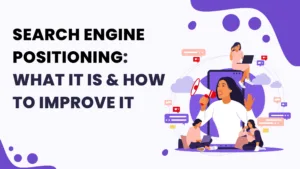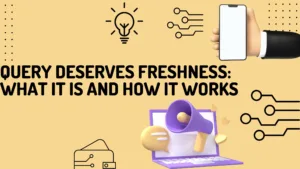Want to expand your reach and get more eyes on your message? The key is creating content that people genuinely want to share on social media.
Social platforms are powerful marketing tools. Unlike most other outreach methods, they allow you to start and maintain direct conversations with your audience.
This gives you the chance to connect with them, address their needs, and show why your product or service is the right choice.
But before you can do that, you need content that grabs attention and encourages engagement. For maximum visibility, it should also be something people will share.
When others share your content, it amplifies your reach, taking your message beyond your own network of followers and exposing it to new audiences you might not have accessed otherwise.
So, how do you create content that people want to repost?
That’s exactly what this guide covers. We’ll look at different types of shareable content, what factors make content worth sharing, and provide examples of formats you can use.
Ready to dive in? Let’s begin.
What Makes Content Shareable
If you’re Beyoncé, you can skip this part—your fans will share anything you post.
For the rest of us, here are some common traits found in content that gets shared widely:
- It’s useful – People love sharing helpful content so their friends and family can benefit too.
- It’s entertaining or funny – Humor spreads quickly. If you make your audience laugh, they’ll likely share it.
- It tells a strong story – Storytelling has always connected people. A good story is something people can’t resist passing along.
- It takes a stand on values – Neutral content rarely gets shared. If your message aligns with your values, don’t hesitate to express it. Those who agree will amplify it.
- It includes visuals – Text-only posts can spread, but adding images or videos makes it far more likely.
- It’s timely – Content tied to current trends or events gets more traction than outdated memes or references.
- It’s original – Repurposed or recycled content usually goes unnoticed. Unique perspectives and fresh ideas stand out.
Now that we’ve covered the qualities of shareable content, let’s explore different content types you can create to encourage shares.
Types of Shareable Content
1. How-To Guides
Life is full of challenges, and people are always grateful for tips that save them time or effort.
They enjoy discovering easier or more effective ways of doing things—and often want to pass that knowledge along to their friends, family, or colleagues.
That’s why how-to guides consistently perform well on social media. They can take many forms, including blog posts, videos, or infographics.
Whether you’re teaching customers the simplest way to use your product, helping them improve their lifestyle, or walking them through a technical process, step-by-step guides are highly engaging—and highly shareable.
2. Infographics
According to research, 32.5% of marketers use infographics more than any other type of visual in their content strategies.
Why? Because they present information in a clear, concise, and visually appealing way.
Infographics are versatile storytelling tools and can serve a variety of purposes, such as:
- Timelines – Show the history of an organization, planned steps, or future projections.
- Statistical visuals – Make data memorable and easy to understand.
- Flowcharts – Break complex ideas into simple steps.
- Comparisons – Present pros and cons or side-by-side differences.
- Maps – Quickly convey geographic details or regional insights.
Because they simplify information, infographics are not only useful but also highly shareable.
3. Memes
Since the rise of internet culture, memes have become a staple of online communication.
Essentially cultural “inside jokes,” memes are funny, relatable, and extremely easy to share. They’re especially popular among younger audiences—55% of users aged 13–35 share memes weekly, and 30% share them daily.
That’s a huge opportunity for brand visibility if you create memes that resonate.
The key, however, is to stay relevant. Using outdated meme formats can feel forced and out of touch—so always keep your content fresh.
4. Videos
From first-person adventure clips to product demos, video content is one of the most engaging and widely shared formats online.
It’s simple to consume and can entertain, educate, or inspire—making it ideal for social sharing.
In fact, the average American spends over 6 hours a day watching video content on mobile devices. Whether it’s music, influencer content, or sports highlights, videos dominate the digital landscape.
If you want to increase your reach and generate shares, video is one of the most powerful tools you can use.
5. Lists & Listicles
This very article is an example of one of the most effective types of shareable content—the listicle (a blend of “list” and “article”).
List-style posts are popular for two simple reasons:
- They set expectations upfront – A headline like “5 Foods That Help Burn Belly Fat” instantly tells readers what the content is about and what they’ll gain from it.
- They’re easy to skim – Research shows that web users typically read only about 28% of the text on a page. Since most people scan for the key points, listicles present information in a way that’s quick to digest.
You can even turn lists into graphics or visuals, making them even more shareable on social platforms.
6. Interactive Content
Today’s audiences expect more than static content—they want to participate.
From fun quizzes and engaging polls to playable ads, interactive content makes people part of the story rather than passive viewers.
When you give users an experience instead of just words, they’re far more likely to share it with their own networks.
7. Heartwarming Stories
Feel-good content never goes out of style. People enjoy uplifting stories—and just as importantly, they love sharing them so others can feel inspired too.
Content that sparks strong positive emotions spreads quickly.
This could be anything from highlighting your company’s charitable initiatives to content that sparks dreams and joy, such as “How to Make Your Wedding Day Truly Special.”
FAQs on Shareable Content
Q1. What does shareable content mean?
Shareable content is any type of content—such as videos, memes, guides, or stories—that people find valuable, entertaining, or inspiring enough to repost on their own social media or share with others.
Q2. Why is shareable content important for marketing?
Shareable content helps brands expand their reach beyond their existing followers. When people share your content, it exposes your brand to new audiences, builds trust, and increases engagement.
Q3. What are the key qualities of shareable content?
Shareable content is usually useful, entertaining, visually appealing, original, easy to understand, and timely. It often sparks emotions or conversations that motivate people to share.
Q4. Which types of content are most likely to be shared?
How-to guides, infographics, memes, videos, listicles, interactive content (like quizzes and polls), and heartwarming stories are among the most shareable formats on social media.
Q5. How can I make my content more shareable?
To make your content more shareable, keep it simple, engaging, and relatable. Add visuals, focus on storytelling, and tie it to trending topics or common challenges your audience faces.
Q6. Do visuals increase the chances of content being shared?
Yes. Content with images, infographics, or videos tends to perform much better because visuals grab attention quickly and are easier to process compared to text-heavy posts.
Q7. Can shareable content help generate leads or sales?
Absolutely. While the primary goal of shareable content is engagement and visibility, it can also drive traffic to your website, strengthen brand awareness, and eventually lead to conversions.




